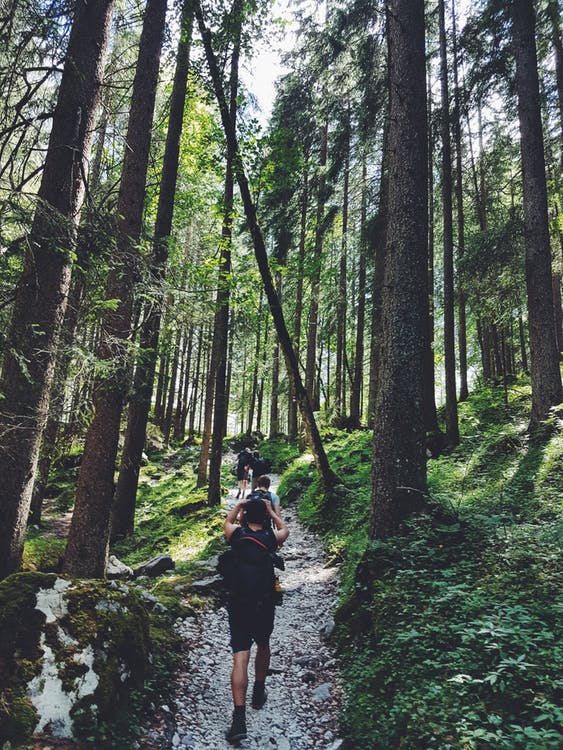Run to the hills

Happy Canada Day! Hopefully this summer season will bring everyone fewer work and/or school demands and more time to enjoy this beautiful place we call home.
I like to run and when my life gets busy, my run routes become very predictable. I generally choose one of the same three routes that start from my front door in order to maximize the limited time I have; unfortunately, this means I’m always running on pavement. Even though I think a run on pavement is better than no run at all, I am excited that summer gives me the chance to get back on the trails!
Trail running naturally benefits the body in ways that would require a great deal of effort and planning to achieve while running on pavement. Dodging boulders, roots and puddles forces our body out of the linear movement patterns common in road running; zig-zagging around obstacles engages and strengthens the muscles that stabilize our feet, ankles and spine. Navigating slippery rocks or muddy sections of trail also requires our stabilizing muscles and our brains to work harder. Our brain must coordinate our movements, maintain balance when we have unstable footing, focus our attention and plan our next moves to successfully maneuver through technical terrain – a great brain and body workout in one!
Another benefit of trail running comes from the frequent change of elevation found on the trails. Running on hilly terrain creates a natural type of interval training, switching up the muscles that are relied on most; for example, running up a hill will build more strength and power in the gluteal and posterior calf muscles than running on flat ground. This type of terrain also requires bursts of high intensity effort, which will give a boost to your cardiovascular fitness as well.
A few points if you’re interested in heading out on the trails:
– make sure your footwear has good ankle support and a trail appropriate sole
-adjust your initial performance expectations. Pace will be slower, perceived exertion will be higher
-increased muscular and cardiovascular demand may mean more post-run fatigue and/or soreness. Make pre- and post-run self care a priority!
- Pre-run*: do a dynamic warm up(see here for more information)
- Post-run*: stretch and foam roll
*plus any stretches/exercises recommended by your therapist
Happy trails to you all!
Leanne Wright, RMT

About twice a month our therapists will be posting answers to commonly asked questions. So, if you have a burning question that you want answered let us know in the comments below.
We can cover anything ranging from active rehabilitation, to injury prevention.
This week our featured therapist is Leanne Wright. To learn more about Leanne check out our PhysioWorks team.


Leave a Reply